How Micro Targeting And Micro Messaging Drives Your PPC Forward
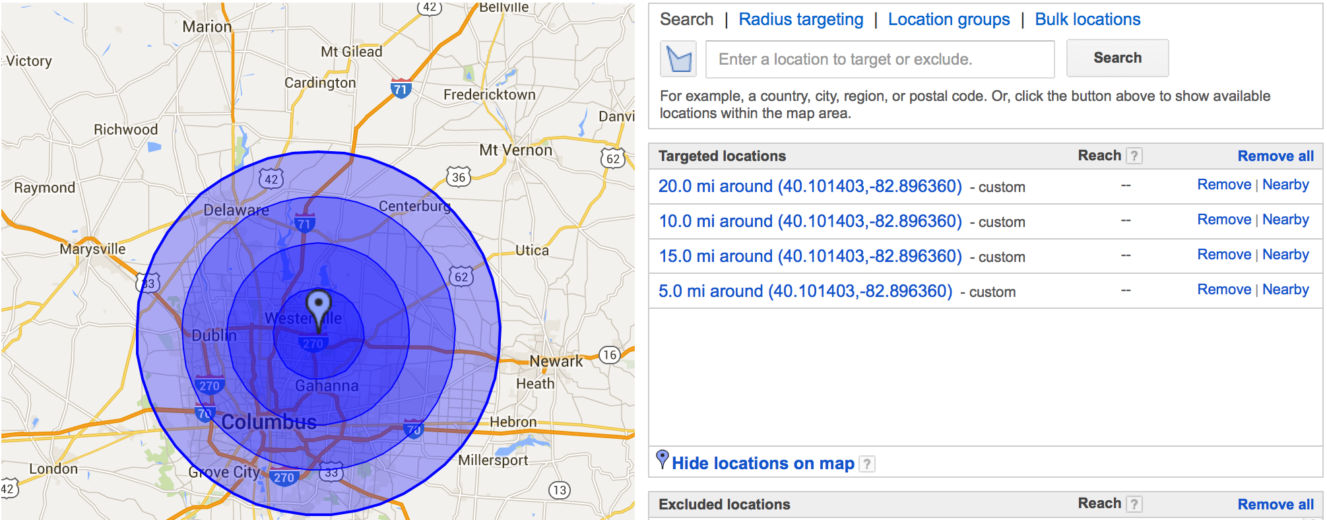
My father was in the retail automotive industry for most of his working life. He always preached to me ‘location, location, location.’ Last week during Google’s live summit, a major focus of the presentation was the rise of local searches. My key takeaway from the rise of local based searches is that granularity is key to a successful paid search account. Providing a personalized experience that’s unique to the geographical location a customer is in and device they are using is critical to what Google calls ‘winning the moment.’
Granularity is not mutually exclusive to Google. Whether advertising on Bing, Facebook, or any other paid search advertising platform, it’s important to draw a one to one connection with those users you are trying to engage.
In this post, we’ll discuss how to leverage data on its most granular level to drive increased engagement and conversion rates.
Are You Micro Targeting?
All paid search advertising is geo-targeted. A geo-radius can range from just a couple miles from a physical location all the way to worldwide. The key to winning the geo-targeting battle is micro targeting audiences. Whether or not businesses have a physical location is irrelevant. Micro targeting allows brands to double down on the geo-targets that produce results and remove wasted spend by not advertising in geo’s that are under performing.
Below is an example of how I geo-target one of my AdWords campaigns. The geo-target for this campaign is not allowed to exceed 20 miles from the business’s physical location.

As you can see, the radius is not set at a straight 20 miles. The geo-boundaries are broken down into 5, 10, 15, and 20-mile increments. Creating these ‘geos within a geo’ provides the ability to track performance in various points of a geographical radius. I can use this data to determine what areas of a geographical location to push and which areas to back off or even exclude. The screenshot below shows geo data at this more granular level.
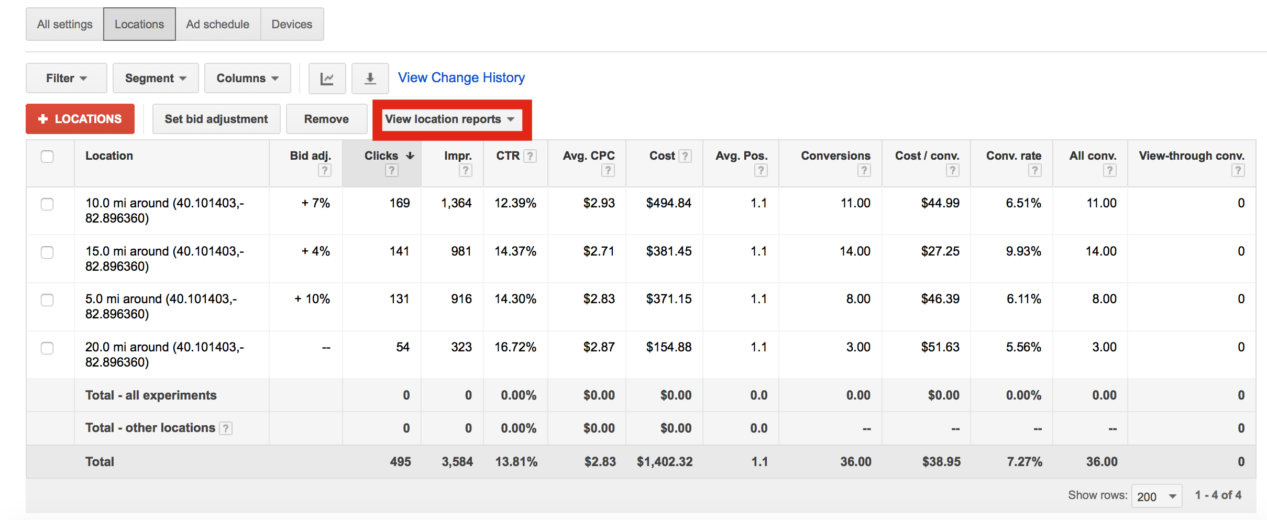
The location report is where we can take micro targeting to the next level. Location reporting allows us to see either what triggered an ad or where in your geo users were located when the ad was clicked.
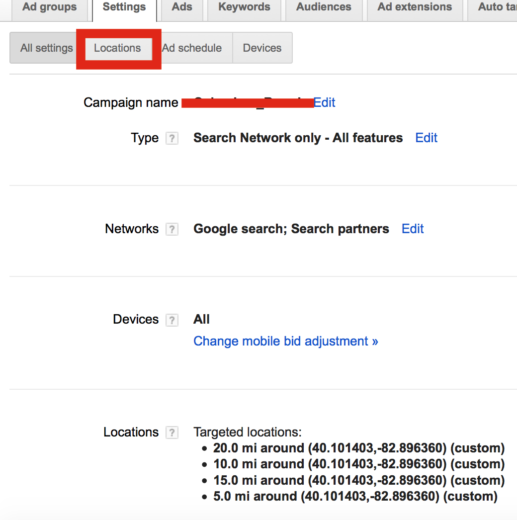
You can use Google’s location reports to view performance by the following attributes:
- State
- Nielsen DMA Region
- Congressional District
- Municipality
- City
- Postal Code
- Airport
- Borough
- Neighborhood
- University
Pulling location reports are easy. Just do the following:
- Click on the campaign you want to optimize.
- Click settings.
- Click ‘location reports.’ A drop-down menu will allow you to choose the type of report you want to view. The two reports to choose from are ‘what triggered your ad (geographic)’ or ‘where your users were (user locations).’
- Your data will now appear. You can download this data or drill in further. To drill in further, check the box by each line item you want more information on.
In the following example, I pulled up a location report by city using the report ‘where your users were.’
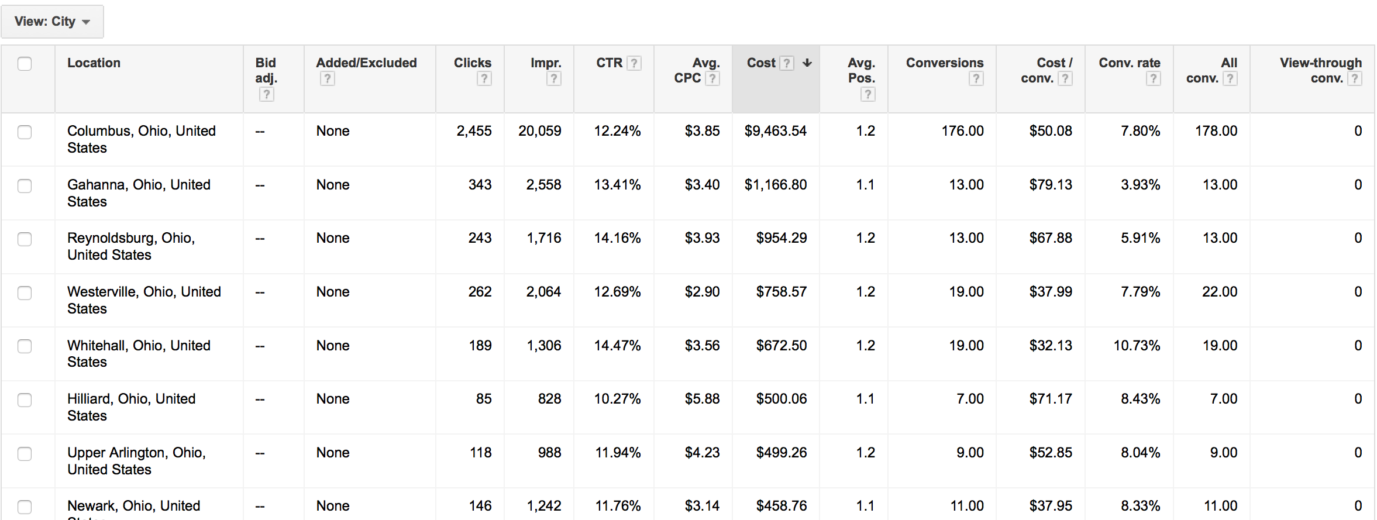
This report helps me determine whether or not I want to focus on a specific city inside the geo I’m advertising in. Based on the data in the screenshot above, the cities of Columbus and Gahanna could be ones I want to focus on. In this case, I would add those cities as separate locations with their own bids. I also have the option of creating a separate campaign with its own city geo-target. I can then control bids, budgets, and ad messages at a micro level if I so choose.
Micro targeting provides a unique opportunity to become truly local in your advertising approach. Micro targeting makes it possible to create campaigns and ad messages that focus on a specific town within a larger geographic radius, or to target people specifically in a geo such as an airport or university.
Using Expanded Text Ads To Micro Message Your Audience
Ad copy is the crucial hinge that carries your audience from passive searcher to active engager. Earlier in this post we discussed how to geo-target on a micro level. Now its time to translate micro targeting of your audience into micro messages that drives up the rate of interaction with your brand.
Expanded text ads (ETAs) is the biggest single change to the AdWords platform (in my humble opinion) since its inception. Below is an example of what an expanded text ad looks like. ETAs allow us to have two 30-character headlines and an 80-character description. The size of these ads provides tremendous flexibility to create micro messages that reach customers on a deeper level. The screenshot below is an example of what an expanded text ad looks like.
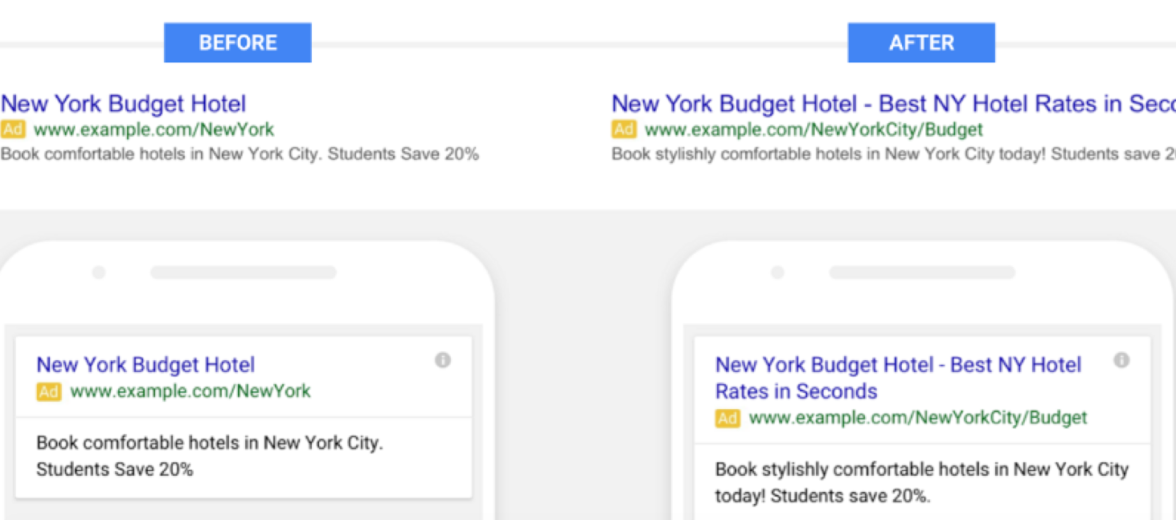
How do we translate micro targeting into micro messages? Based on the micro-targeting example I gave earlier, here’s an example formula I would use to translate micro targeting learning’s into a micro message.
Headline #1: Geo Specific Headline (Columbus Ohio Nursing Schools)
Headline #2: Call to Action (Contact us Today For More Info)
Description: Discuss benefits to users in relation to the geographical location. (Flexible Schedules & Close to the Bus. Learn More About Your Program of Interest)
URL Path #1: (Columbus)
URL Path #2: (Schools)
Ad copy should be further personalized by creating ad extensions that reinforce the benefits and features of the geo location your targeting. For instance, use your callout extensions to call out benefits specifically related to your geo location (IE: Only 5 miles from downtown). Add location extensions that advertise a physical location’s address for that added touch of personalization.
Translating the granularity of your geo targeting into micro messaged ad copy develops a deep one on one connection between brand and customer that develops loyalty and leads to repeat engagement.
Final Thoughts
Paid advertising provides reams of information on a granular level that can be leveraged to gain a strategic advantage. That being said, we’re all guilty of under utilizing the hidden gems of data that’s available to us. The difference between winning and losing in terms of our paid search and social performance is often decided by how deep we want to go in order to engage customers.
Although there’s a balance of being granular vs. being able to manage your account quickly and efficiently, don’t ignore the deep data insights PPC provides. Use it to develop a local connection between your brand and your customers.



